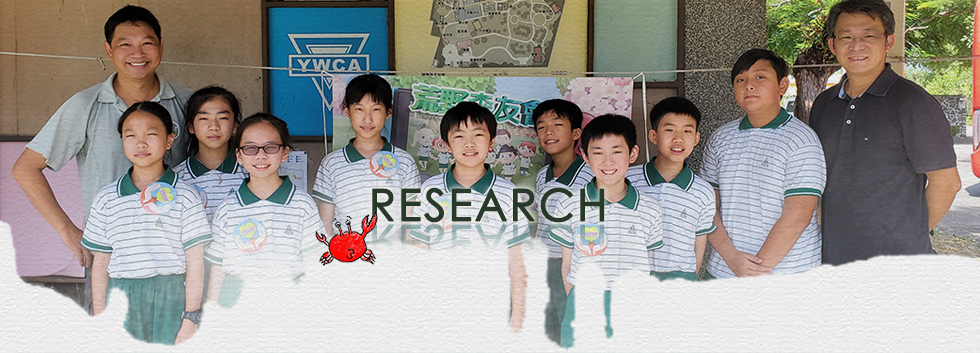Sample Size:359
Gender:□ Male □ Female
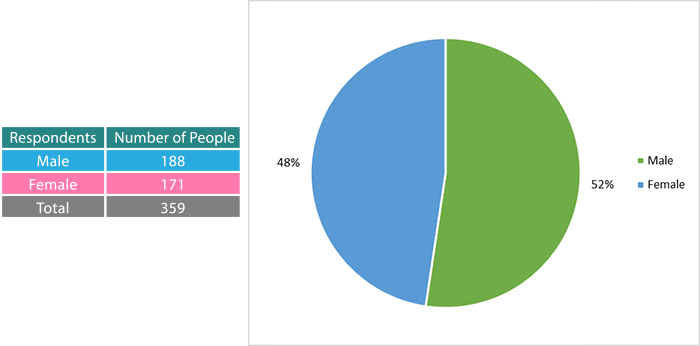
From the statistics, the gender ratio of the respondents is considered balanced. The result is not affected by gender difference.
Grade:□ 3rd □ 4th □ 5th □ 6th

Considering 1st and 2nd graders have limited reading and comprehensive ability, they were excluded from the sample size. The ratio of juniors (3rd & 4th Grade) and seniors (5th & 6th Grade) is considered balanced.
Q1. Do you know an environmental protection organization called the Society of Wilderness?
Yes
No
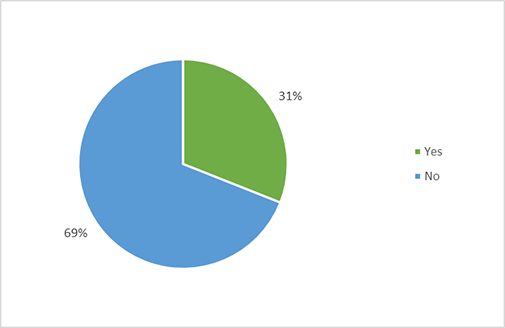
Among 359 elementary students, 112 students know about the Society of Wilderness and 247 do not. This means that most students are not familiar with the development of Taiwan’s environmental conservation. Through our research project, we hope that the whole school can get to know the Society of Wilderness and participate in future activities to make a contribution to the natural environment.
Q2. Where did you get the knowledge of environmental protection for the first time? (Check 1 only)
School Curriculum
Environmental Activity
Television
Articles / Picture books
Internet

Over half of the juniors and seniors learned about environmental knowledge in school for the first time, followed by internet and television, and books and activity ranked last. It can be inferred that on campus promotion is most effective to reach out to the students. We can have more promotional campaigns on campus to maximize the effectiveness of environmental education.
Q3. Do you know that the environmental destruction caused by human activities will make many species unable to survive and lead to reduction of biodiversity?
Yes
Yes with limited knowledge
No
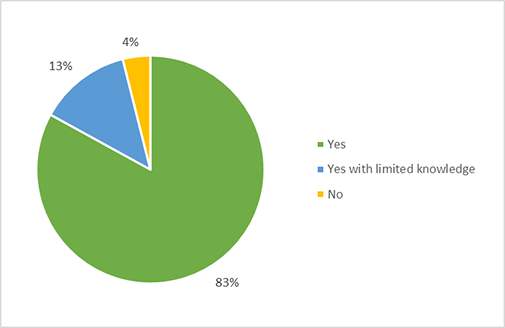
Over 80% of the students know about the destruction done to the environment can lead to reduction in biodiversity. Through promotion and education, we should make an effort to transform such awareness into actual actions to stop the destruction of our environment.
Q4. Have you and your family ever participated in volunteering services for environmental protection activities?
No
Sometimes
Always
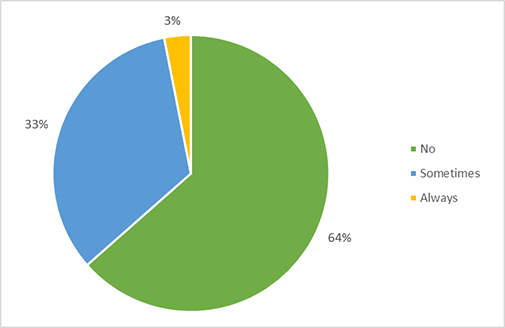
Over 1/3 of the students (33% Sometimes & 3% Always) had participated in volunteering services for environmental protection. However, there are still 64% who have not had such experience. The data suggests that there can be more family friendly activities to gain people’s attention. With our picture book sharing, environmental experience promotion and photo exhibition, we hope to increase SOW’s visibility so that more people will know that SOW offers many family oriented activities.
Q5. Do you know that Daan Forest Park offers a free ecological tour every month?
Yes
No
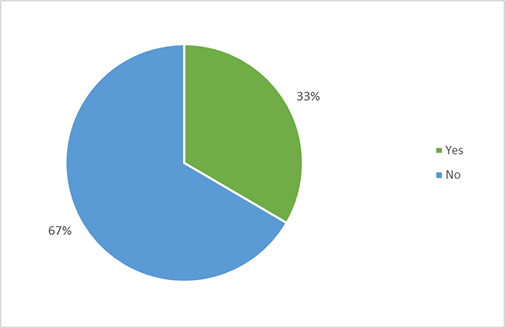
33% of the students know about the free monthly ecological tour offered by Daan Forest Park and 67% do not. It shows that there is still room for improvement in terms of park promotions. We also hope that more people can use this opportunity to step into nature and learn how to protect the environment we all live in.
Q6. Most of the waste on the beach is garbage that human beings produce in their daily life. Do you and your family bring your own tableware to reduce the use of disposable tableware when eating outside?
No
Sometimes
Always
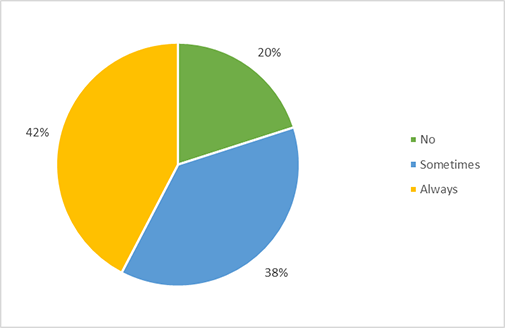
The purpose of this question is to see whether the concept of plastic reduction has been carried out in elementary students’ daily life. From the result, only 42% of the students are able to reduce the use of disposable tableware. The government plans to ban the use of disposable tableware in 2030. The data suggests that more promotion is required for more people to learn the importance of plastic reduction.
Q7. If possible, I am willing to visit Taiwan’s forest recreational locations (national forest recreation area, hiking trails, education center, forestry culture park, etc) and treat them with good care.
Agree
Neutral
Disagree
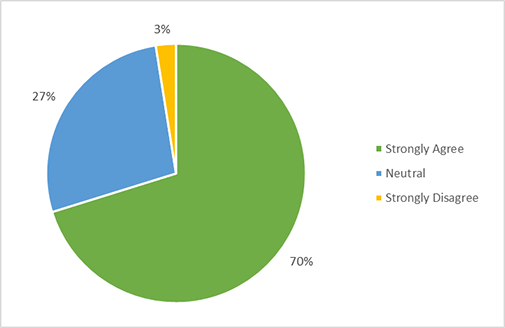
In regards to visiting Taiwan’s forest recreational locations, only 2% of the students had strongly disagreed with the statement. It shows that most students are willing to enjoy outdoor activities and experience the beauty of Taiwan’s nature. Not only have a better understanding of the environment, but also can inspire more passion toward protecting the natural environment together!
Q8. Wetlands have various functions, they can be ecological habitats and carbon sinks with flood control and water purification abilities. Taiwan’s famous wetlands include Sicao Wetland, Gaomei Wetland, Wugu Wetland, and Shuanglianpi, etc. Have you been to any of the wetlands in Taiwan?
Yes
No
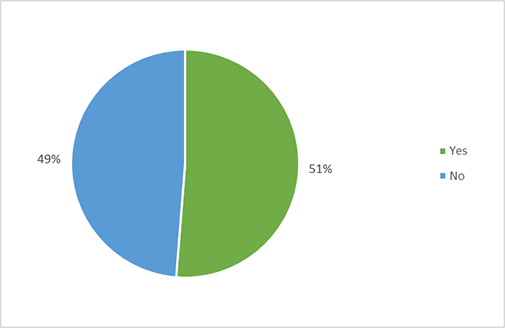
51.3% of the respondents have visited wetlands before. This shows that the current tourism style has gradually transformed from pure entertainment to environmental education. The increase in the public's willingness to visit the natural environment is a result of the promotion efforts made by social groups such as the Society of Wilderness.
Q9: The Society of Wilderness often organizes activities to promote environmental conservation. Which of the following activities are you most interested in? (Check 1 only)
Seminar
Ecological Tour
Beach/Mountain Cleanup
Donation
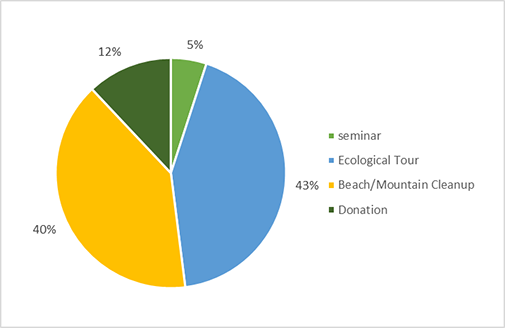
From the data, 12% of the students are interested in seminars, and only 5% are interested in making donations. However, nearly 83% of the students have shown interest in outdoor activities with 43% interested in ecological tours and 40% in cleanup activities. This shows that most of the students agree with SOW’s current approach of using outdoor activities as a key to environmental promotion. In the future, perhaps we can combine seminars and donations with outdoor activities to have a more diversified presentation of environmental promotion activities.
Q10. If you have the opportunity, would you want to participate in the activities organized by SOW and do your part for the environment?
Yes
No
I need to think about it
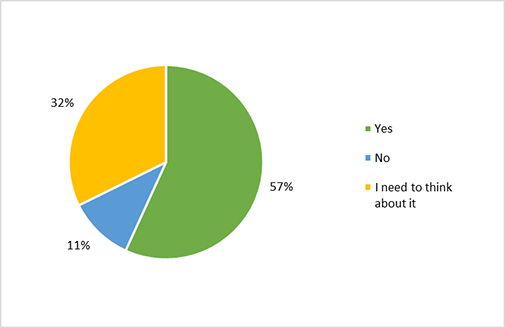
Over half of the students in higher grades have expressed interest in taking part in environmental protection. However, there are still 43% of students not that enthusiastic in taking part in the environmental issues, showing that environmental education still has room for improvement.

